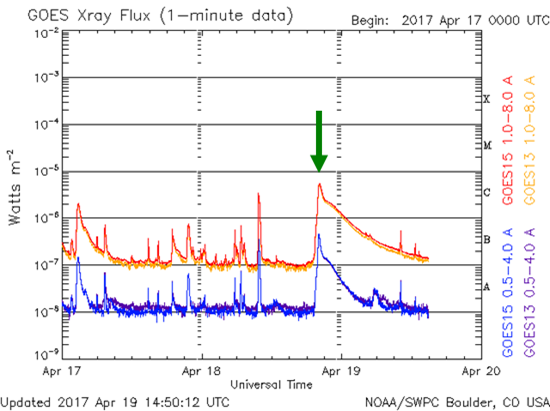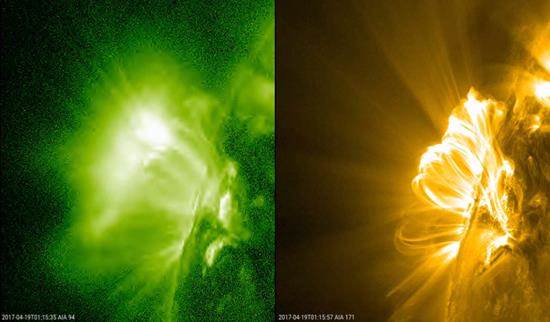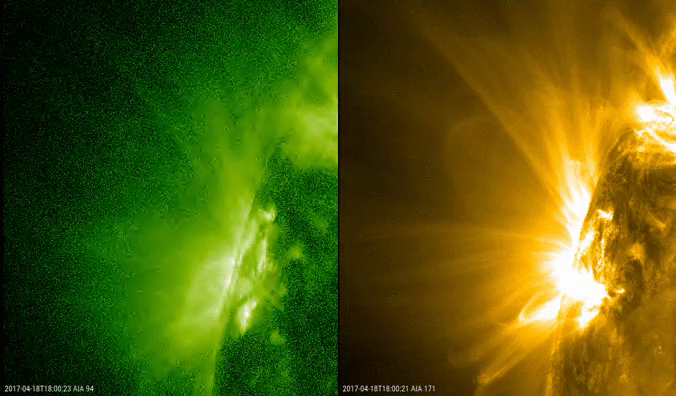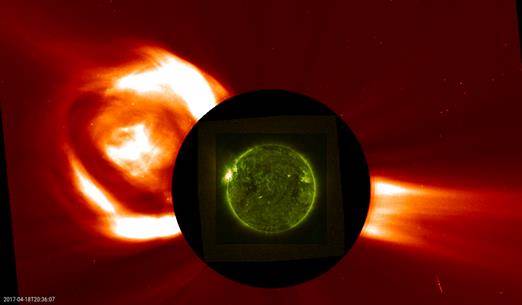On 18 April, an active region rounded the Sun's northeast limb. It was the return of the old sunspot group NOAA 2644, which produced several medium flares at the end of its previous transit early April (see this news item). The region got a new name (NOAA 2651), and quickly showed it still had the potential for producing strong flares. Peaking at 20:10UT on 18 April, a long duration C5.5 flare (see GOES) was recorded with NOAA 2651 as its source.

A movie showing the various aspects of this solar eruption can be found at https://youtu.be/7rtsN0CtAeo The first clip shows full disk extreme ultraviolet (EUV) imagery of the event combining images from SDO/AIA171 (temperatures near 700.000 degrees) with the wide-field PROBA2/SWAP174 images (temperatures near 1 million degrees). The location of the event is obvious, as well as the disturbance in the solar corona created by the eruption, and the subsequent development of a series of post-eruption coronal loops ("arcade"). The next movie shows a close-up of this arcade in SDO/AIA171 and the much cooler SDO/AIA304 passband (about 80.000 degrees; reddish). In AIA304, there's an obvious downstreaming of cool material along the coronal loops. Also, at their maximum extent, these loops were towering nearly 120.000 km above the solar surface, that's about 10 times the Earth's diameter!


The subsequent clip compares SDO/AIA171 with the much hotter SDO/AIA094 passband (multi-million degrees; greenish). In this passband, the coronal loops are not so well visible, but it shows bright features on top of these loops, the so-called supra-arcade downflows (see this news item for more info and another example). The AIA094 images complement very well the AIA171 images by showing the ejection of the hot plasma and coronal restructuring. This is highlighted in the next two clips, where these images are stacked upon the wide-field PROBA2/SWAP174 images.

The final two animations show the coronal mass ejection (CME) associated with this C5 flare. Plane-of-the-sky speeds around 750 km/s were calculated from the SOHO/LASCO coronagraph imagery, with the true speeds higher around 900 km/s. There was also a type II radio burst detected, with a deduced shock speed of 1007 km/s. Though the bulk of the CME was directed away from Earth, an impact from the shock around 21 April is possible. As NOAA 2651 is rotating further onto the solar disk, and if the region retains its flaring potential, any associated CME might become a lot more geo-effective.





